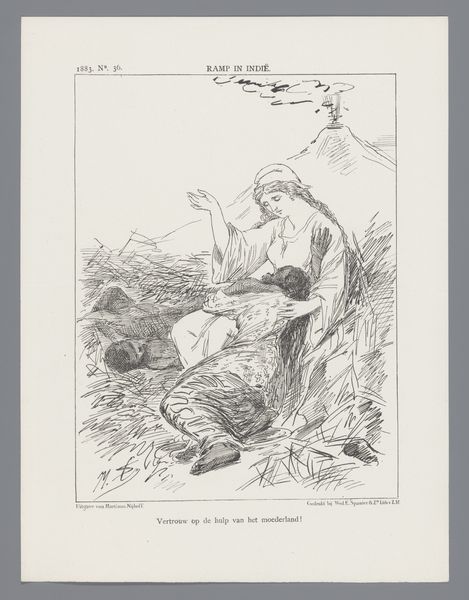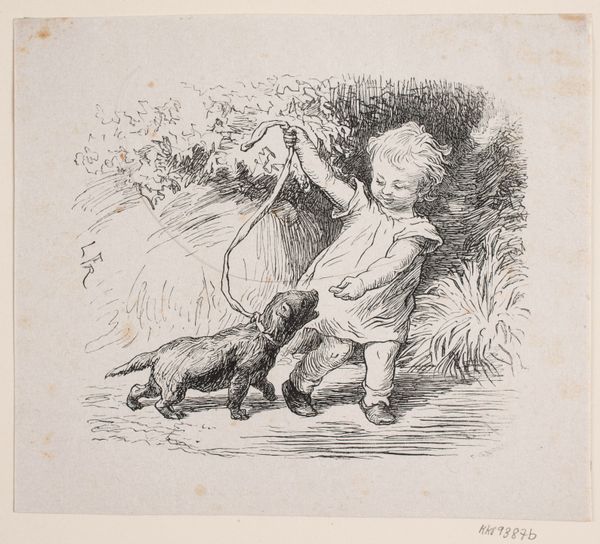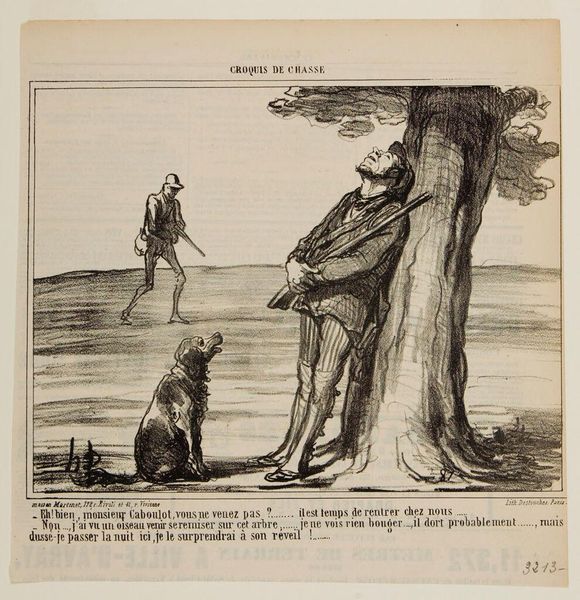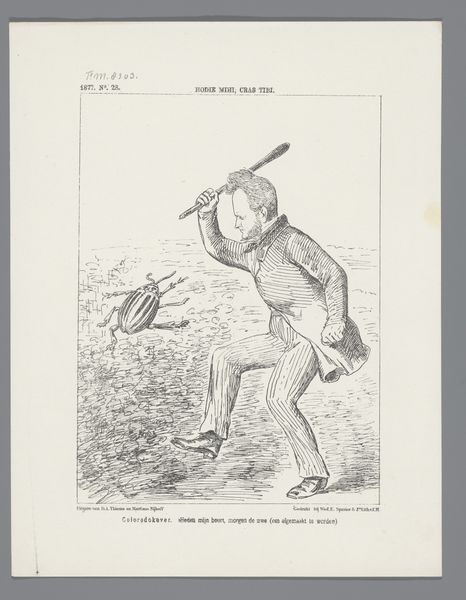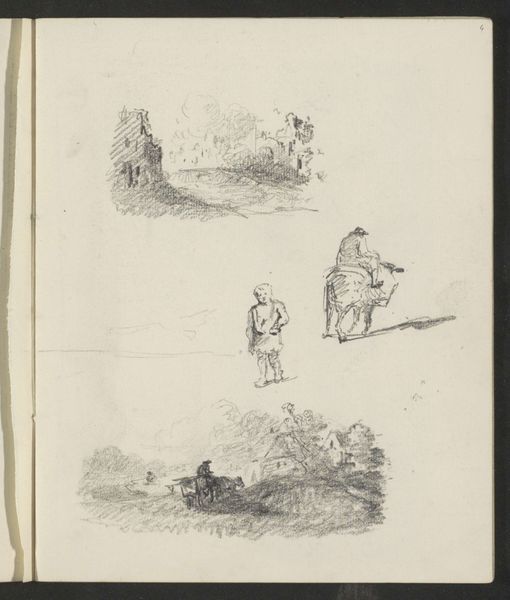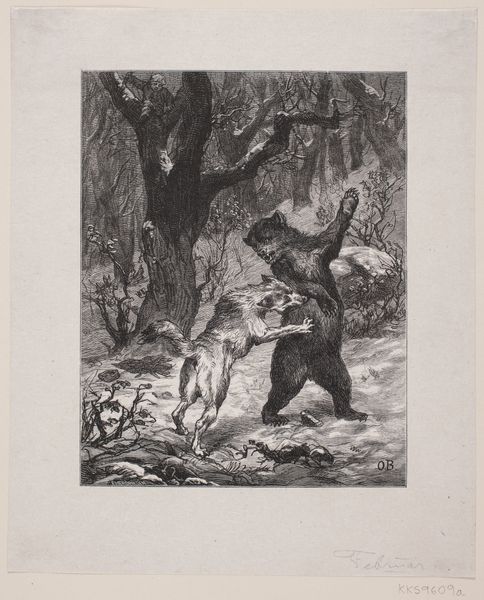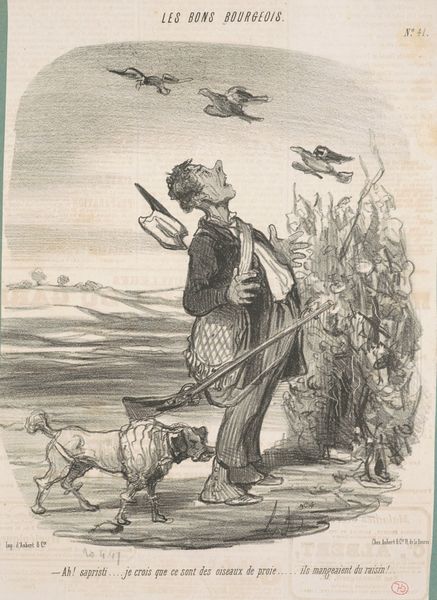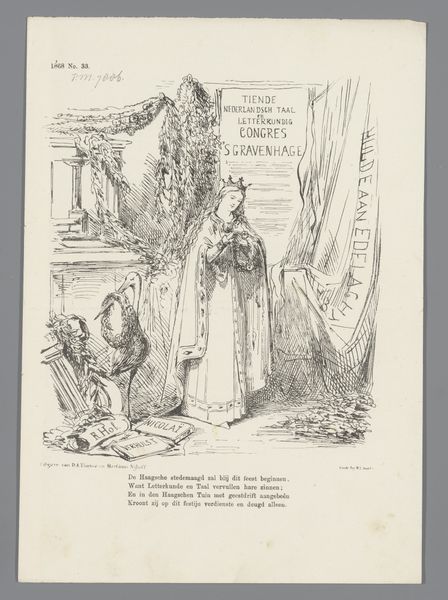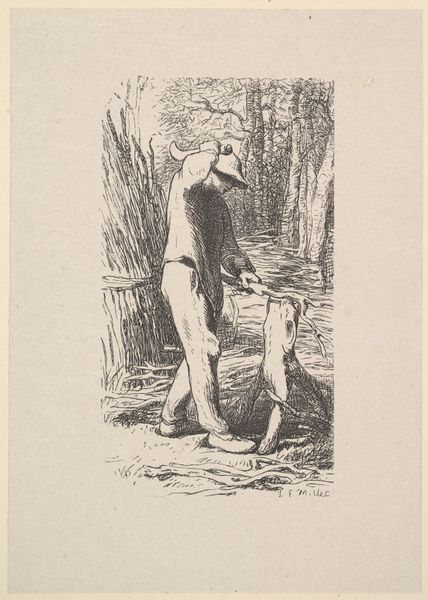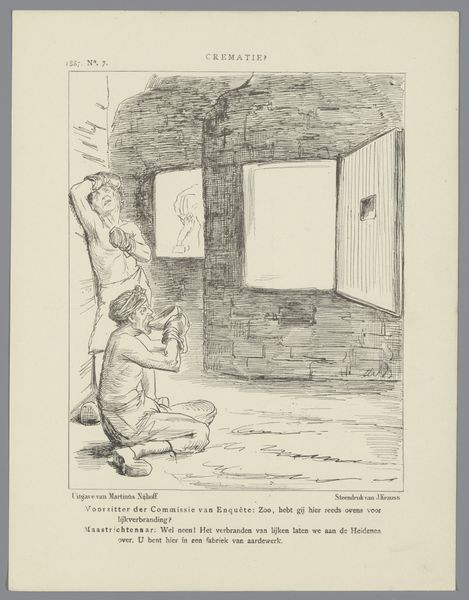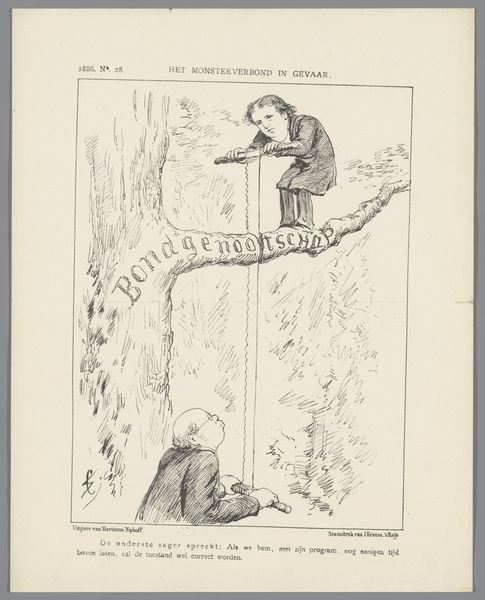
drawing, print, paper, ink
#
drawing
# print
#
caricature
#
paper
#
ink
#
folk-art
Dimensions: height 275 mm, width 215 mm
Copyright: Rijks Museum: Open Domain
Curator: This rather whimsical drawing and print by Johan Michaël Schmidt Crans is titled "Spotprent over het letterkundig tractaat met Duitsland, 1885," which translates to "Cartoon about the literary treaty with Germany, 1885." It’s crafted with ink on paper. Editor: It’s stark and humorous. The linear hatching creates a scene of satirical commentary. The contrast seems almost exaggerated, highlighting a distinct division, doesn't it? Curator: Indeed. As a caricature, it aims to convey a pointed message. It’s more than just a comical image; it's a reflection of cultural anxieties and political dynamics between the Netherlands and Germany at the time. Editor: The figure in the tree holds what seems to be a sign marked with the letters "LT N-D." Below him, a fox reaches up expectantly. There’s an element of fable here, of some deception perhaps? Curator: Absolutely. The inclusion of text, notably a reference to “De vos en de rock,” a take on "The Fox and the Rock" alludes to underlying currents of perceived betrayal or strategic manoeuvring in these dealings. The image can be interpreted as a commentary on Dutch apprehensions regarding the encroachment of German cultural influence. The treaty negotiations likely stoked concerns about cultural identity and autonomy, rendered tangible by the cartoonish narrative elements and their immediate accessibility. Editor: It’s intriguing how the artist uses folklore. By referencing a fable, he imbues the scene with a moral dimension, transforming political commentary into a more universally accessible narrative. It’s not merely about politics, it’s about deeper symbolic resonance and cultural continuity. Curator: Precisely. Schmidt Crans effectively turns political anxieties into digestible folk art. This satirical critique cleverly disguises political discourse with readily comprehensible figures and symbols, rendering the cartoon both historically and culturally significant. It becomes more than an artifact: it encapsulates cultural memory and continuity via imagery. Editor: It really makes you consider how something so specifically political can be both biting in its moment, but also timeless in its reliance on instantly understandable symbolic forms. Curator: The charm is indeed timeless in a manner that lets us connect with cultural feelings. Editor: Absolutely. Thanks for unveiling a narrative within the work.
Comments
No comments
Be the first to comment and join the conversation on the ultimate creative platform.

